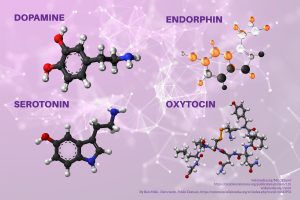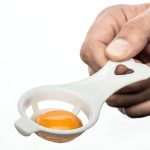Microdosing Happiness With Endogenous Substances
Every day, observant Jews recite the blessing Asher Yatzar, acknowledging the profound wisdom embedded in the human body—its vessels, hollows, and the delicate balance that sustains life. Within this blessing, we declare that HaAdam—the human being—was created b’chochmah, with wisdom. But what does this wisdom signify? Does it refer to G-d’s Divine intelligence manifested in creation? The profound wisdom with which Hashem formed humanity? Or perhaps the wisdom instilled in each person, as one created in His image? While all these interpretations hold truth, I believe the most compelling understanding is that Hashem, in His infinite Wisdom, designed the human body with an intrinsic, self-regulating intelligence—an innate capacity for health, healing, and well-being.
This Divine wisdom, which sustains life, includes not just survival mechanisms but innate systems that enhance well-being—particularly, the body’s natural neurochemicals. These endogenous substances, such as dopamine, serotonin, oxytocin, and endorphins, serve as the body’s happiness hacks, helping optimize mood, connection, and health through intentional activities.
By understanding how simple behaviors can activate these neurochemical systems, we can naturally “microdose” happiness. This involves small, intentional actions that tap into the body’s inherent wisdom, enhancing our joy, resilience, and vitality.
We spoke about these miraculous molecules before (feel free to review): https://toratherapeutics.com/shhhh-im-microdosing
Unlocking the Power of Neurotransmitters
Each neurotransmitter plays a key role in well-being, and through simple actions, you can activate them to “microdose” happiness.
- Dopamine – The Reward Driver
Dopamine motivates and reinforces behaviors, encouraging goal achievement. It’s released when we complete tasks, celebrate small wins, or indulge in a treat like dark chocolate. Setting small, achievable goals creates a positive feedback loop, reinforcing satisfaction. - Serotonin – The Mood Stabilizer
Serotonin helps regulate mood, sleep, and emotional well-being. Boost serotonin by spending time in the sunlight, practicing gratitude, or engaging in activities like knitting. Research shows that sunlight increases serotonin, improving mood and reducing depression risk. - Oxytocin – The Bonding Hormone
Oxytocin is central to trust, emotional closeness, and social bonding. It reduces stress and fosters a sense of belonging. Acts like hugging, petting a dog, or expressing gratitude trigger oxytocin. Research indicates that oxytocin enhances empathy and strengthens interpersonal relationships. - Endorphins – The Natural Painkillers
Endorphins relieve pain and elevate mood. They are released during physical activity, laughter, or pleasurable stimuli like music. Laughing with friends or engaging in a brisk walk are great ways to trigger endorphins. Even spicy food and dark chocolate can help boost endorphin levels. - GABA – The Calming Neurotransmitter
GABA promotes relaxation and stress reduction by calming neural activity. Deep breathing, stretching, or sipping green tea (which boosts GABA) can elevate levels. Meditation and progressive muscle relaxation are also effective for GABA enhancement. - Norepinephrine – The Energy Booster
Norepinephrine increases focus and energy. Engage in morning exercise, take cold showers, or enjoy stimulating activities like competitive games to increase norepinephrine. Tyrosine-rich foods like poultry and nuts can also support its production. - Anandamide – The Bliss Molecule
Anandamide, the “bliss molecule,” influences mood and appetite. Running, spending time in nature, and consuming dark chocolate are natural ways to boost anandamide. This “runner’s high” demonstrates the body’s ability to self-generate euphoria.
Practical Application: Microdosing Happiness
Small, intentional activities can significantly impact mood and well-being. For instance, the Havening Techniques™, a psychosensory method involving self-soothing touch, can boost oxytocin and reduce stress. Similarly, savoring uplifting music or engaging in mindful exercises can activate multiple neurotransmitters simultaneously.
“Microdosing vs. Macrodosing”
Microdosing involves small, deliberate actions—like hugging or writing a gratitude note—while macrodosing might include larger events like spending an afternoon with friends. Both contribute to a resilient, joyful life.
Daily Dosing
Even in a busy world, small actions like hugging, celebrating small wins, or walking in nature can significantly boost well-being. Whether you’re microdosing with a single hug or macrodosing at a celebration, these actions enhance life’s joy and connection.
Conclusion
The science of happiness doesn’t require complex interventions. By microdosing happiness through small, intentional actions, we harness the body’s natural capabilities to create a balanced, fulfilling life. Whether through a hug, a moment of laughter, or a mindful walk, these small actions can transform our emotional landscape. Let’s begin today, choosing joy—one microdose at a time.
Happiness Hacks
- Dopamine: Set and achieve small goals, celebrate wins, engage in rewarding hobbies.
- Serotonin: Get sunlight exposure, exercise regularly, practice gratitude.
- Oxytocin: Hug loved ones, engage in acts of kindness, practice empathy.
- Endorphins: Exercise, laugh, eat dark chocolate, engage in creative arts.
- GABA: Practice deep breathing, yoga, meditation, and drink calming herbal teas.
- Norepinephrine: Exercise, engage in goal-oriented tasks, drink green tea.
- Anandamide: Run, spend time in nature, enjoy dark chocolate.
For a more extensive version of this article, please join my Substack column BY CLICKING HERE
We love hearing from you, please feel free to leave your comments below.
With Gratitude,
Rus Devorah



